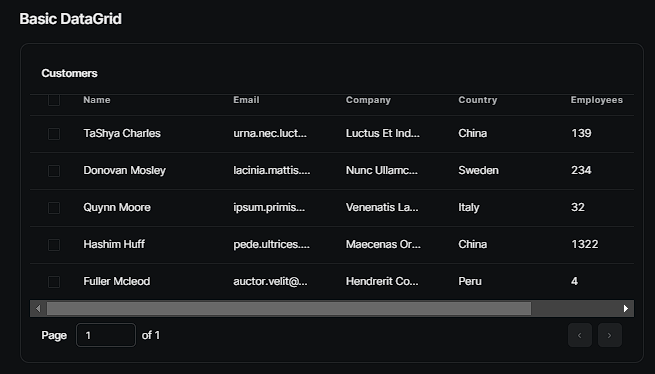The British pound has been navigating a turbulent financial landscape, reflecting a blend of domestic and international challenges. From political uncertainty to global economic headwinds, its value has fluctuated considerably over the past year. For investors, businesses, and individuals with exposure to the pound, the coming months pose critical questions about its direction.
In order to assess the pound's future, it's essential to consider the key factors that have driven recent market trends. Factors such as inflation, interest rates, and Brexit's lingering impacts continue to shape the pound's performance. This article provides an in-depth exploration of the forecast for the pound over the next six months, analyzing potential outcomes.
Whether you're looking to invest in GBP, manage currency risk for your business, or simply stay informed, understanding the pound forecast next 6 months will help you make more informed financial decisions. Let's dive into expert predictions, major influences, and the strategies you can adopt to prepare for the months ahead.
Current Performance of the British Pound
The British pound's recent performance has been marked by volatility. Over the past year, the currency has seen sharp fluctuations in response to domestic and international developments. In 2023, the pound gained strength against the US dollar in the first half, but rising inflation, weak GDP growth, and global uncertainties have since led to some depreciation.
A significant factor influencing the pound's recent decline has been inflation, which remains stubbornly high in the UK. The Bank of England has been forced to raise interest rates multiple times to combat inflation, a move that has brought both opportunities and challenges for the currency. Higher interest rates typically support the pound by attracting foreign capital, but they can also slow down economic growth, putting downward pressure on GBP.
Another factor affecting the pound's performance is Brexit. While it has been several years since the UK officially left the European Union, the economic consequences are still unfolding. Trade disruptions, new regulations, and a lack of clear agreements on certain sectors have all contributed to the pound's instability.
Key Factors Affecting the Pound in the Next 6 Months
Several factors will play a crucial role in shaping the British pound's performance in the coming months. One of the most significant is the Bank of England's monetary policy. The central bank has been navigating a fine line between controlling inflation and avoiding a deep economic recession. With inflation currently running above the target, further interest rate hikes are a possibility, which could either support or strain the pound depending on market reactions.
Inflation and economic data will also remain key drivers. The UK economy has struggled to achieve robust growth, and indicators such as employment rates and GDP performance will likely influence the pound's direction. If inflation begins to fall as a result of tighter monetary policy, it may give the pound some breathing room, but any signs of stagflation or slowing growth could exert negative pressure.
Another important element is the UK's evolving trade relationships, particularly post-Brexit. Brexit and trade agreements continue to cast a shadow over the pound. The UK's recent efforts to strengthen trade deals with non-EU countries are still in their infancy, and the long-term benefits remain uncertain. Trade frictions with the EU and other partners are still unresolved in many areas, and this could lead to further strain on the currency.
Finally, geopolitical risks should not be overlooked. The global economic environment remains uncertain, with challenges such as the war in Ukraine, US-China tensions, and global supply chain disruptions all having potential to impact the pound. If global risk factors intensify, the pound may face added pressure as investors seek safe-haven currencies like the US dollar or Swiss franc.
Forecasted Scenarios for the Pound
Given the multitude of factors influencing the pound, analysts have developed a range of scenarios for its performance over the next six months. The optimistic scenario envisions a situation where inflation is brought under control, the UK economy stabilizes, and trade agreements progress smoothly. Under these conditions, the pound could strengthen, particularly if the Bank of England manages to strike a balance between inflation control and supporting economic growth.
In a neutral scenario, inflation could slowly decrease, but the UK economy may not show strong signs of recovery. The pound would likely remain relatively stable, experiencing neither major gains nor losses, as the economy continues to face uncertainties. In this case, the currency would hover near its current levels, with minor fluctuations in response to short-term data.
The pessimistic scenario is perhaps the most concerning. If inflation remains high despite central bank interventions, or if geopolitical risks escalate, the pound could weaken significantly. Economic contraction, coupled with political uncertainty, could trigger a sell-off of GBP assets, pushing the pound lower against major currencies like the US dollar and the euro.
Expert Opinions and Predictions
Many financial analysts share mixed opinions on the pound's future. While some are optimistic that inflation will ease and the UK economy will improve, others believe that the headwinds are too strong for any significant recovery in the short term. According to a report from Bloomberg, some experts predict that the pound may gain against the dollar if inflation drops faster than expected and the UK avoids a severe recession.
On the other hand, some investors remain cautious, citing ongoing risks such as energy prices, which could spike again during the winter months, further complicating the inflation outlook. Market sentiment appears divided, with some experts forecasting the pound to strengthen slightly, while others predict continued volatility and a potential decline.
How Investors and Businesses Can Prepare
For businesses and investors, understanding these scenarios is crucial in formulating strategies for the next six months. Companies with significant exposure to GBP should consider hedging strategies to manage their currency risk. For example, businesses can use forward contracts to lock in exchange rates, protecting against potential declines in the pound's value.
Individual investors, particularly those holding GBP assets, should monitor key economic indicators and central bank decisions closely. Diversifying portfolios by including assets in other currencies may help mitigate risks associated with the pound's potential fluctuations. Additionally, paying attention to global events and geopolitical risks will allow investors to adjust their strategies accordingly.
Long-term considerations for businesses should include staying updated on Brexit-related trade agreements and any regulatory changes that may affect their operations. For investors, keeping an eye on Bank of England decisions and inflation reports will be critical to understanding the pound's future trajectory.
Conclusion
In conclusion, the pound's forecast for the next six months remains uncertain, with a range of outcomes depending on key factors such as inflation, monetary policy, and global economic risks. While there is potential for the pound to strengthen in an optimistic scenario, ongoing challenges could lead to continued volatility or even depreciation. Businesses and investors should prepare for various possibilities, adopting hedging strategies and diversifying their portfolios where possible.


